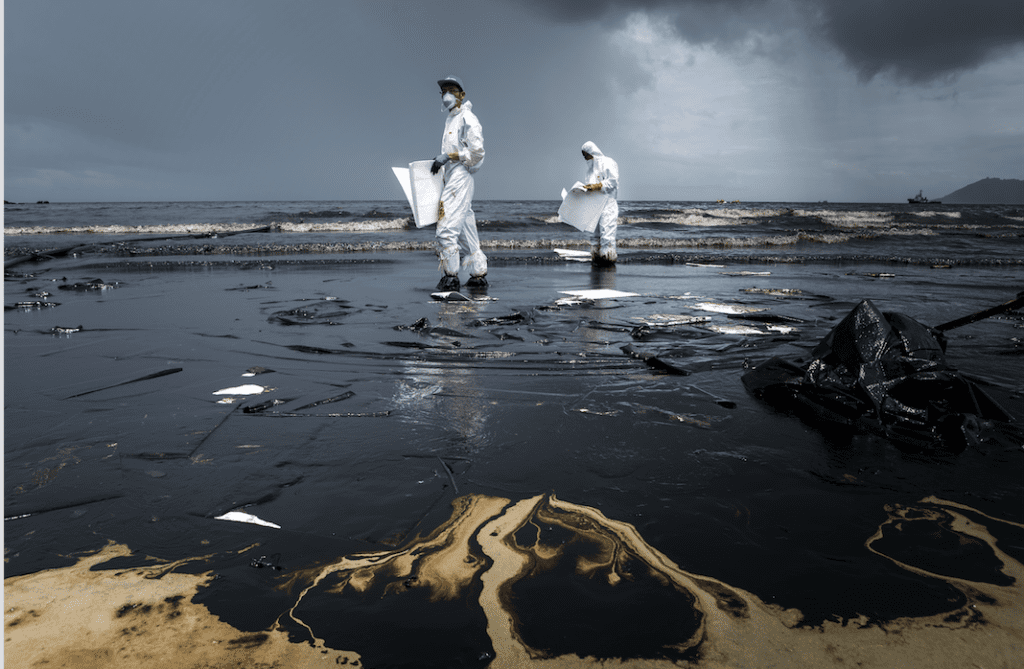An understanding of global regulations surrounding the transport and declaration of hazardous materials can help manufacturers to optimize both safety and supply-chain dynamics
The global nature of today’s supply chains mean that as intermediate chemicals and products are transported, any number of corporate or national interests may hold some responsibility in the assumed risks. Over time, governments – individually and collectively – have established baseline rules and regulations, which set the standard for vessel and commodity interests, and these sets of rules are especially important in cases where the transported materials are hazardous. The business considerations and risks faced by various involved parties are outlined in Part 1 of this feature, Transporting Hazardous Materials Part 1: The Ebbs and Flows of Commodity Interests. These rules and regulations (also called conventions) delineate liabilities of the parties and establish legally binding rules for vessel interests to limit their liability. Further complicating matters are the various government statutes, which instill varying degrees of liability among the parties. While the National Transportation Safety Board (NTSB) and U.S. Coast Guard assume responsibility for investigating incidents among U.S.-flagged vessels, they have no control over non-U.S.-flagged vessels. However, it is worth noting that much of the international maritime fleet may choose to fly “flags of convenience” from smaller developing nations, resulting in lower costs, and oftentimes, more lax labor rules. Compounding the issue, the countries flying these flags may not necessarily possess the resources to properly investigate fires or other incidents. [1].
United States, its territories and possessions
The Comprehensive Environmental Response, Compensation, and Liability Act (CERCLA), provides a federal “superfund” to clean up uncontrolled or abandoned hazardous waste sites, as well as accidents, spills and other emergency releases of pollutants and contaminants into the environment. Through CERCLA, the U.S. Environmental Protection Agency (EPA) was given power to seek out those parties responsible for any release and assure their cooperation in the cleanup. The EPA cleans up orphan sites when potentially responsible parties cannot be identified or located, or when they fail to act. Through various enforcement tools, the EPA obtains private party cleanup through orders, consent decrees and other small-party settlements. The EPA also recovers costs from financially viable individuals and companies once a response action has been completed.
Under CERCLA, any and all parties under risk or potentially under risk, can be — and often are — compelled to fund remediation expenses or associated costs. These costs and expenses are typically allocated on a pro rata (proportional) basis, so each pays its own fair share. However, there are instances when those who should fund do not have the ability to fund, causing the costs to be allocated to the remaining responsible parties.
The Clean Water Act (CWA), as amended by the Oil Pollution Act of 1990, provides the basic statutory authority for pollution prevention, contingency planning and response activities within the 200-mile Exclusive Economic Zone for oil and hazardous substances.

Figure 1. In the U.S., there are several baseline frameworks guiding the cleanup of environmental incidents, including oils spills and releases of hazardous chemicals
The OPA, which amended the CWA, addresses a wide range of issues associated with preventing, responding to and paying for oil pollution. OPA Title I established oil spill liability and compensation requirements, including the Oil Spill Liability Trust Fund (OSLTF), to help facilitate cleanup activities and compensate for damages from oil spills (Figure 1). In 1991, the U.S. Coast Guard created the National Pollution Funds Center (NPFC) to implement Title I of OPA, administer the OSLTF, and ensure effective response and recovery.
This is designed to provide baseline compensation for interim losses of, such natural resources and services, from the date of the incident until recovery. This promotes expeditious and cost-effective restoration of natural resources and services impacted by an incident. There is a natural-resource damage-assessment process for developing a plan for restoring the injured natural resources and services and pursuing implementation or funding of the plan by responsible parties. This part also provides an administrative process for involving interested parties in the assessment; a range of assessment procedures for identifying and evaluating injuries to natural resources and services; and a means for selecting restoration actions from a reasonable range of alternatives.
This Carriage of Goods by Sea Act governs shipments to and from the U.S., and states that the shipper “shall not be held responsible for any loss or damage incurred by the carrier or vessel resulting from any cause without the act, fault or neglect on the part of the shipper, his agents or servants.” This general negligence standard is modified with respect to flammable, explosive or dangerous goods.
The rest of the world
The best way of improving safety at sea is to develop international regulations that are followed by all shipping nations. From the mid-19th century onward, a number of such treaties were adopted. Several countries proposed establishing a permanent international body to promote maritime safety more effectively, but it was not until the establishment of the United Nations itself that these hopes were realized. In 1948, an international conference in Geneva adopted a convention formally establishing the International Maritime Organization (IMO).
These conventions include the following:
- The Hague rules/Visby amendments fix the liability of vessel or carrier interest in the event loss results from properly declared cargo.
- The York Antwerp Rule, a set of maritime rules established in 1890, have been amended several times since their inception. The rules outline the rights and obligations of both ship and cargo owners in the case that cargo must be jettisoned in order to save a ship. Generally, major documentation, contracts and insurance policies will include the York Antwerp Rules in their language. The York Antwerp Rules contain three clear principles, all of which must be met in order for the rule to be applied:
- Danger to the ship must be imminent
- There must be a voluntary jettison of a portion of the ship’s cargo in order to save the whole,
- The attempt to avoid the danger must be successful. Assuming all criteria have been met, all parties will share proportionally in the financial burden of the losses incurred to the owner or owners of any of the cargo that was jettisoned in order to save the vessel [2]
- The International Maritime Dangerous Goods (IMDG) Code was formed to prevent all types of pollution at sea. The IMDG code also ensures that the goods transported through seaways are packaged in such a way that they can be safely transported. The dangerous goods code is a uniform code. This means that the code is applicable to all cargo-carrying ships around the world. There are nine clauses in which dangerous goods are classified, ranging from Class 1 — Explosives to Class 9 — Cannot be classified but remain dangerous
- The European Parliament and of the Council of 21 April 2004 on environmental liability with regard to the prevention and remedying of environmental liability damage (ELD) establishes a framework based on the “polluter pays” principle to prevent and remedy environmental damage. The “polluter pays” principle is set out in the Treaty on the Functioning of the European Union (Article 191(2) TFEU). As the ELD deals with the “pure ecological damage,” it is based on the powers and duties of public authorities (“administrative approach”) as distinct from a civil liability system for traditional damage, damage to property, economic loss and personal injury.
- The International Convention for the Prevention of Pollution from Ships (MARPOL) is the main international convention covering prevention of pollution of the marine environment by ships from operational or accidental causes. The MARPOL Convention was adopted on 2 November 1973 at IMO. The Protocol of 1978 was adopted in response to a spate of tanker accidents in 1976 – 1977. As the 1973 MARPOL Convention had not yet entered into force, the 1978 MARPOL Protocol absorbed the parent convention. The combined instrument entered into force on 2 October 1983. In 1997, a protocol was adopted to amend the convention and a new Annex VI was added which entered into force on 19 May 2005. MARPOL has been updated by amendments through the years. The convention includes regulations aimed at preventing and minimizing pollution from ships – both accidental pollution and that from routine operations – and currently includes six technical annexes. Special Areas with strict controls on operational discharges are included in most annexes.
Conclusion
Supply chains will continue to be critical elements of the world economy. They will also continue to evolve much like global trading markets. There is risk in moving all kinds of goods internationally, but when hazardous materials are involved, there is added complexity that requires specialized expertise. Much of this risk can be mitigated through contracts, insurance and protective measures, and the effectiveness of these steps can be enhanced when collaborating with experts who have a deep understanding of the circumstances and potential solutions. However, when unforeseen events do occur and things go very wrong, all of the proven measures that once worked no longer apply. These events should compel those at risk to carefully analyze and understand the potential for balance-sheet risks, which are created by contractual limitations and lack of attachable insurance. Conversely, a prospective approach to risk affords clients the luxury of time to analyze, quantify and implement business model changes before the next event. ♦
Edited by Mary Page Bailey
References
- Paris, Costas, Spate of Fires has Shipping Industry Looking at how Dangerous Goods are Handled, The Wall Street Journal, Nov. 24, 2019.
- Britannica, Maritime Law – Limitation of Liability; https://www.britannica.com/topic/maritime-law/Limitation-of-liability.
Author
 Christopher Alviggi is senior vice president and Environmental Insurance Practice leader at insurance broker and consultant firm NFP Corp. (Phone: 732-913-9881; Email: [email protected]). He has more than 20 years of accretive commercial insurance brokerage experience, which includes a breadth of insurances, each with unique risk profiles. His broking experience includes: casualty risk management accounts, including mergers & acquisitions; construction and capex projects both domestic and internationally; oil and gas/natural resources; and environmental risk. Chris earned an M.B.A. in international finance/risk management and a B.S. in finance from the College of Insurance, which is now part of St John’s University in Queens, N.Y.
Christopher Alviggi is senior vice president and Environmental Insurance Practice leader at insurance broker and consultant firm NFP Corp. (Phone: 732-913-9881; Email: [email protected]). He has more than 20 years of accretive commercial insurance brokerage experience, which includes a breadth of insurances, each with unique risk profiles. His broking experience includes: casualty risk management accounts, including mergers & acquisitions; construction and capex projects both domestic and internationally; oil and gas/natural resources; and environmental risk. Chris earned an M.B.A. in international finance/risk management and a B.S. in finance from the College of Insurance, which is now part of St John’s University in Queens, N.Y.